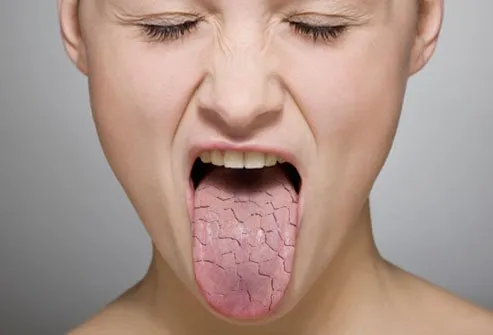By day, the salivary glands of the mouth produce approximately a liter and a half of saliva;Thanks to her, in chewing, dry food, crumbled or in the process of disintegration becomes a soft and humid mass, the so -called "food bolus", which will allow its passage through the esophagus without choking.
Saliva fulfills very important functions in the body, because it helps in chewing and swallowing, as well as in the elimination of food particles, especially sugars and refined flours;It also participates in the lubrication of the oral mucosa, in the sense of taste and in the speech process.
However, the high level of blood glucose affects the functioning of the salivary glands that, if not producing the substance, the proliferation of bacteria and fungi that can form colonies in any oral zone is encouraged.
In this regard, Dr. Beatriz Aída Moreno Súchil, Coordinator of Stomatology at the Mexican Delegation of the Mexican Social Security Institute (IMSS), explains that the lack of saliva (xerostomy) in the patient with diabetes increases the probability of injuries, both inteeth as in tissues around, such as the tongue, which cracks by constant dryness.He explains.
It also refers that the dryness of Boca is associated with bad breath (halitosis), since saliva has antiseptic properties that keep the oral cavity clean and lubricated;So, when the amount of saliva is not enough, oral hygiene suffers and it is made impossible for its acidity to act against the bacteria of the mouth, which occurs particularly during the night, so the mouth usually presents a bad smell by theMornings.
Just as bad breath has a social impact on the patient with diabetes, it is also a poor way of speaking derived from the absence of saliva, since this interferes with the relationship with others and even in the mood of the affected.
On the other hand, saliva meets a very important antimicrobial function.In the mouth there are numerous wet and warm surfaces, which constitute the ideal habitat for microorganisms such as bacteria, yeasts (such as candida) and amoebas (such as Entamoeba gingivalis).Some of these can only survive in the oral cavity if they manage to adhere and not be swallowed, which is prevented by saliva.
Dr. Moreno Súchil explains that the most frequent problems by xerostomy in the patient with diabetes are periodontal diseases, that is, those that affect the tissues that make up the supporting support structure, which have different manifestations, including gingivitis (inflammationand gum bleeding) and periodontitis (the advance of the previous one that can affect the bone).Therefore, it is not uncommon for wounds, ulcers and decay that affect the neck and root of the teeth, even leading to the loss of pieces.
For the IMSS specialist, before the signs of Boca Seca, the family doctor, endocrinologist or the diabetes educator must be informed, so that the bad control of glucose levels is regularized.“The patient's collaboration with the treating doctor or educator in diabetes will focus on those measures that allow the control of glucose levels, such as following diet based on integral cereal, fruits, vegetables and white meat, while avoiding foods such as foods such as foods such asRefined sugar and flour, fat, sausages and red meat. ”
It also suggests measuring the concentration of blood sugar every day, taking the necessary medications at your time to control the disease and exercise for 30 minutes a day.“It is not over to take simple water sips frequently, avoid caffeine, drink liquids during meals, reduce the consumption of irritants, condiments andsalt, as well as eradicate alcohol and tobacco. ”
Finally, the dentist Moreno Súchil emphasizes that good oral health is an integral part of total health.“It is very important that the patient with diabetes brushes his teeth with all care after each meal, and use dental thread to complement his cleaning;In addition, good glycemic control must be insisted, as well as the constant review of the oral cavity and schedule visits to the dentist, at least every six months, for regular checks. ”


